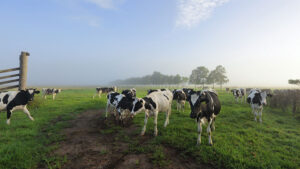On a continent as dry as Australia, nothing is as critical as access to water. There have been plenty of arguments over water use, especially in the Murray Darling basin. They’ve stopped short of war.
Wars have been fought over water in the past. The first record of water being used as a weapon dates back to 2500 BC when the King of Lagash cut off the water supply to a city in neighbouring Umma.
Through time, rivers have been dammed – and dams blown up. Irrigation canals have been diverted. Wells have been destroyed. Reservoirs have been poisoned.
Romans were famed for the sophistication of their aqueducts. The Goths were famed for destroying things. In 537 AD, they destroyed virtually every aqueduct around Rome.
Saladin defeated the Crusaders by filling their wells with sand.
In the 16th century, the Dutch ended a siege by Spain by flooding the area around the besieged city. (In a low-lying country like Holland, flooding became a popular defence.
The American Civil War, the Great War, the Spanish Civil War and the Second World War saw their fair share of bombings, floodings and poisonings.
One of the most famous attacks on water critical water infrastructure was the Dambusters Raid of 1943.
History also records frequent attempts by angry farmers to blow up dams and irrigation channels that robbed them of the water needed to grow their crops.
In the celebrated film Jean de Florette, water played a starring role. Greedy neighbours blocked a natural spring, depriving Gérard Depardieu’s farm of water. His crops dead, the strain ultimately led to Jean’s untimely death.
The most interesting attempt to bargain with water was probably the Youth International Party’s threat to spike Chicago’s water with LSD in 1968.
Without access to fresh water, some crops, some farms and some food-growing regions simply wouldn’t exist.
As Australia’s largest river network, the Murray and Darling Rivers have been the scene of battles over the years.
Downstream states fought upstream states to ensure that damming and diversions didn’t rob them of water. The first agreement between states was in 1914. In 1992, a new agreement was drawn up to meet changed circumstances. It was further updated to address issues arising from a prolonged drought.
The Riverina region on the New South Wales/Victoria border is often referred to as Australia’s food bowl. Famous for citrus orchards (it produces 90% of NSW citrus), it also grows a huge share of the country’s grapes, olives, almonds and rice, along with dozens of varieties of other fruit and veg.
Managing access to water from the Murray Darling Basin has often been a battle between farmers, communities and conservations.
Further north, another conflict is playing out. This time between farmers and miners. The Great Artesian Basin covers 22% of Australia and 4 states. It is the largest and deepest artesian basin in the world. It is the only source of fresh water in much of inland Australia. Farmers and townships that rely on its water are battling coal seam gas miners whose fracking could fracture the rock formations below the water. If that were to happen, artesian pressure could fall and the basin could dry up. Ecosystems, farms and communities would collapse.
There have been heated debates about water use in Australia. To date, no actual wars have broken out. As our planet becomes hotter and drier, water will become even more precious. Who knows how water conflict might play out in the future?
Until then, we can only be grateful to our farmers who use water to produce the food we eat, and the governments that protect our water supplies from exploitation.
Photo by Loren King via Unsplash




